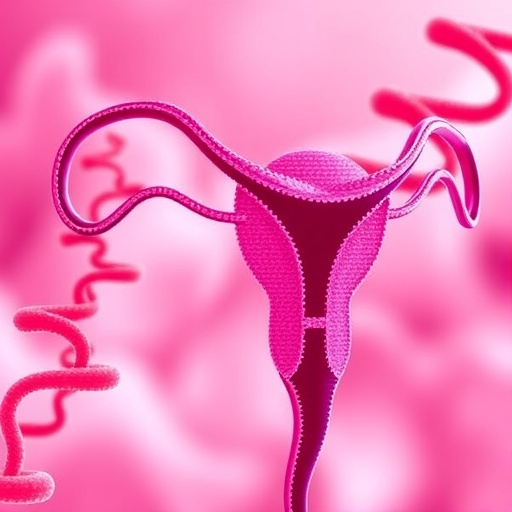In the specialized field of neonatal intensive care, the battle against intraventricular hemorrhage (IVH) in preterm infants remains an enduring challenge for clinicians worldwide. A recent discourse ignited by Goyen, Jani, Skelton, and colleagues has reopened critical dialogue regarding a seemingly straightforward yet profoundly debated intervention: midline head positioning. This simple maneuver, aimed at potentially reducing the risk and severity of IVH, prompts a pivotal question—does midline head positioning truly hold clinical merit, or is it a futile practice awaiting dispensation through rigorous scientific validation?
Intraventricular hemorrhage constitutes one of the most devastating complications in preterm neonates, especially those born before 32 weeks of gestation or with very low birth weight. The fragile cerebral vasculature within the germinal matrix predisposes these infants to bleeding that can extend into the ventricular system, leading to long-term neurodevelopmental impairments and mortality. Over the decades, neonatologists have employed various strategies to mitigate this risk, ranging from meticulous ventilatory management to pharmacologic interventions. Among these, positioning of the infant’s head has been proposed as a non-invasive, cost-effective approach grounded in hemodynamic principles.
The crux of this hypothesis lies in intracranial venous drainage dynamics. The cerebral venous system, particularly in preterm infants, is highly sensitive to positional changes. It is believed that optimal midline alignment of the head prevents venous outflow obstruction, reduces intracranial pressure fluctuations, and thereby diminishes the mechanical stress on the fragile germinal matrix vessels. This theoretical framework gained traction from observational studies noting lower incidences of IVH in infants whose heads were maintained in a midline neutral position during the early critical postnatal window. Nevertheless, the causal link remains tenuous without the support of large-scale randomized controlled trials.
.adsslot_1L72ynXQtd{ width:728px !important; height:90px !important; }
@media (max-width:1199px) { .adsslot_1L72ynXQtd{ width:468px !important; height:60px !important; } }
@media (max-width:767px) { .adsslot_1L72ynXQtd{ width:320px !important; height:50px !important; } }
ADVERTISEMENT
The article by Goyen and colleagues underscores this ambiguity and cautions against complacency in clinical practice. Despite being widely recommended and adopted in neonatal intensive care units (NICUs) globally, the evidence base supporting midline head positioning is largely derived from retrospective analyses and underpowered studies. The authors expertly synthesize existing literature, elucidating methodological limitations, sample size constraints, and heterogeneity in intervention protocols that preclude definitive conclusions. Without standardized guidelines or conclusive trial data, the intervention’s efficacy is arguably based more on tradition and plausible physiology than empirically proven benefit.
Moreover, this ongoing uncertainty bears significant implications for clinical stewardship and resource allocation. Neonatal care providers often rely on a bundle of interventions to protect vulnerable infants, which collectively strain staffing, training, and equipment resources. If midline head positioning does not confer a measurable reduction in IVH, NICUs must reconsider the weight placed on this practice relative to other evidence-based measures. Conversely, if proven effective, emphasis on meticulous head positioning could become a cornerstone of IVH prophylaxis, fostering improved outcomes through a simple, non-pharmacological strategy.
The authors also delve into the practical challenges that complicate the implementation and evaluation of midline head positioning. In the dynamic NICU environment, maintaining strict head alignment is arduous, influenced by infant movement, caregiver handling, respiratory and vascular access devices, and neurological status. These real-world factors introduce variability that can obscure the intervention’s true impact. Additionally, heterogeneity in IVH grading systems and timing of cranial ultrasounds further complicate outcome assessments across studies. Such complexities necessitate rigorously designed multicenter trials with standardized protocols and objective endpoints.
Interestingly, the conceptual debate surrounding midline head positioning reflects broader themes in neonatal medicine about balancing innovation with evidence-based rigor. Historical precedents have shown how well-intended interventions, once embraced universally, can later be debunked or refined following robust scrutiny. The neonatal field’s evolution demands a continuous commitment to questioning established dogma and embracing methodologically sound research to validate or invalidate prevailing practices.
This dialogue also reverberates beyond neonatal care, touching upon fundamental neurophysiological insights into cerebral blood flow regulation and intracranial pressure mechanics in vulnerable populations. Emerging imaging modalities and computational models may offer novel avenues to quantify how subtle positional adjustments influence cerebral hemodynamics in real time, potentially illuminating mechanisms underlying hemorrhage risk. Such interdisciplinary approaches combining neonatology, neurology, bioengineering, and imaging science may pave the way for precision medicine strategies in perinatal brain injury prevention.
Concurrently, ethical considerations arise in designing definitive trials to assess midline head positioning. Given the current equipoise and widespread clinical adoption, randomizing infants to non-midline positioning may evoke concerns regarding potential harm, whereas limiting the intervention’s use without firm proof risks withholding a possibly beneficial measure. Addressing these dilemmas requires transparent stakeholder engagement, including clinicians, researchers, parents, and regulatory bodies, to ensure trials are both scientifically rigorous and ethically sound.
The article’s provocative title, “Does midline head positioning decrease intraventricular hemorrhage or is it futile? Without a definitive trial, we will never know,” encapsulates the essence of an unresolved clinical conundrum. It eloquently calls for the neonatal community to collectively mobilize resources and expertise toward conducting a definitive randomized controlled trial. Such an endeavor would ideally stratify infants by gestational age, baseline risk factors, and adjunctive therapies, employing standardized outcome definitions and long-term neurodevelopmental follow-up to delineate true clinical value.
Beyond the immediate neonatal implications, resolving this question will likely influence guidelines issued by leading bodies such as the American Academy of Pediatrics and the European Society for Pediatric Research. Clear, evidence-based recommendations could unify clinical protocols worldwide, reduce practice variability, improve training curricula, and ultimately enhance infant health outcomes on a global scale. Equally, it may redirect research priorities toward other promising but understudied interventions in perinatal neuroprotection.
In conclusion, while midline head positioning is conceptually appealing and physiologically plausible as a means to reduce intraventricular hemorrhage in preterm infants, current evidence remains inconclusive and fragmented. The article by Goyen and collaborators merits high attention for highlighting this gap and advocating for urgent, definitive investigation. Until such data emerge, clinicians must navigate the balance of plausible benefit, potential futility, and ethical responsibility, continuously reappraising their practices in light of evolving science.
Resolving this question transcends academic debate; it holds profound clinical significance for the tiniest and most vulnerable patients at the threshold of life. In the delicate dance to shield the preterm brain from injury, understanding whether a seemingly modest intervention can tip the scales toward health or remain an elusive chimera is a challenge the neonatal community must confront head-on. Only through rigorous, collaborative research can science transform conjecture into certainty, ultimately illuminating the path to safer, more effective neonatal care.
Subject of Research: The efficacy of midline head positioning in reducing intraventricular hemorrhage (IVH) risk in preterm infants.
Article Title: Does midline head positioning decrease intraventricular hemorrhage or is it futile? Without a definitive trial, we will never know.
Article References:
Goyen, TA., Jani, P.R., Skelton, H. et al. Does midline head positioning decrease intraventricular hemorrhage or is it futile? Without a definitive trial, we will never know. World J Pediatr 21, 533–536 (2025). https://doi.org/10.1007/s12519-025-00922-6
Image Credits: AI Generated
Tags: cerebrovascular dynamics in preterm infantsclinical significance of infant head positioningcost-effective neonatal care methodsevaluating clinical interventions in neonatologyevidence-based practices in neonatologyhemodynamic principles in infant careintraventricular hemorrhage prevention strategiesmidline head positioning in neonatesneonatal intensive care challengesneurodevelopmental outcomes in preterm infantsnon-invasive interventions for IVHpreterm infant care practices





